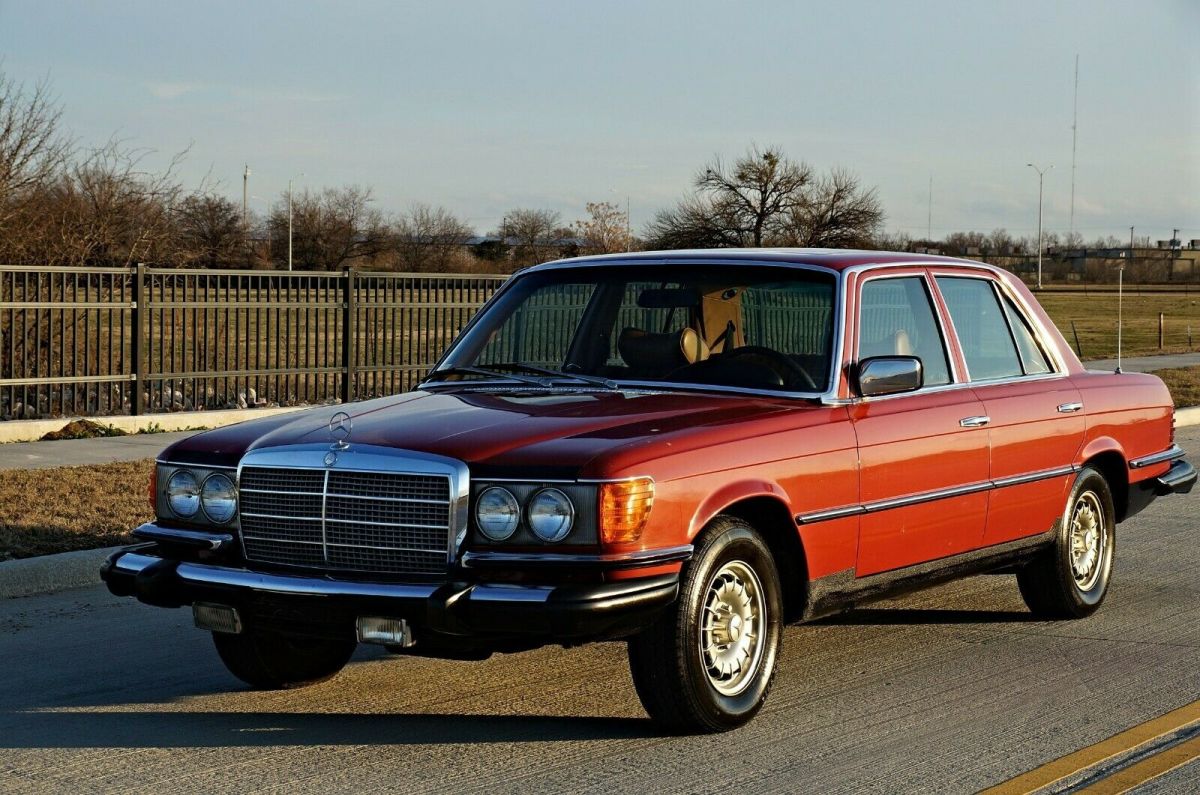When it comes to engine design, the long-stroke layout often walks a fine line between durability and disaster. On paper, longer strokes promise more torque, better low-end power, and improved fuel efficiency.
But in the real world, not all long-stroke engines live up to their potential. Some prove nearly indestructible, racking up hundreds of thousands of miles with minimal fuss—while others end up as cautionary tales in forums and repair shop horror stories.
In this article, we’re diving into the world of long-stroke engines to separate the legends from the letdowns. We’ll highlight five long-stroke engines that have stood the test of time, earning reputations for reliability and longevity.
Long-Stroke Engines That Last Decades
Then, we’ll shift gears and take a hard look at five long-stroke engines that just couldn’t hold themselves together, plagued by premature wear, design flaws, or poor real-world execution.
Whether you’re engine shopping, wrenching in your garage, or just curious about what makes or breaks a long-stroke motor, this list is your roadmap to the best—and worst—the layout has to offer. Let’s get into it.
1. Mercedes-Benz OM617 (3.0L I5 Diesel)
Stroke-to-Bore Ratio: 1.09
Years Active: 1974–1991
The OM617 is the poster child of long-stroke reliability. Found in Mercedes W123 and W126 models, this inline-five diesel has a reputation for reaching well over 500,000 miles with basic maintenance.
Its overbuilt internals, indirect fuel injection, and cast-iron block make it virtually indestructible. Taxi fleets and farmers across the globe still run these decades later.
Often hailed as one of the most reliable engines ever produced, the OM616 and OM617 modular diesel engines were designed by Dr. Ferdinand Piëch during his time at Mercedes-Benz—the same engineering mind responsible for Audi’s five-cylinder engine and quattro drivetrain.
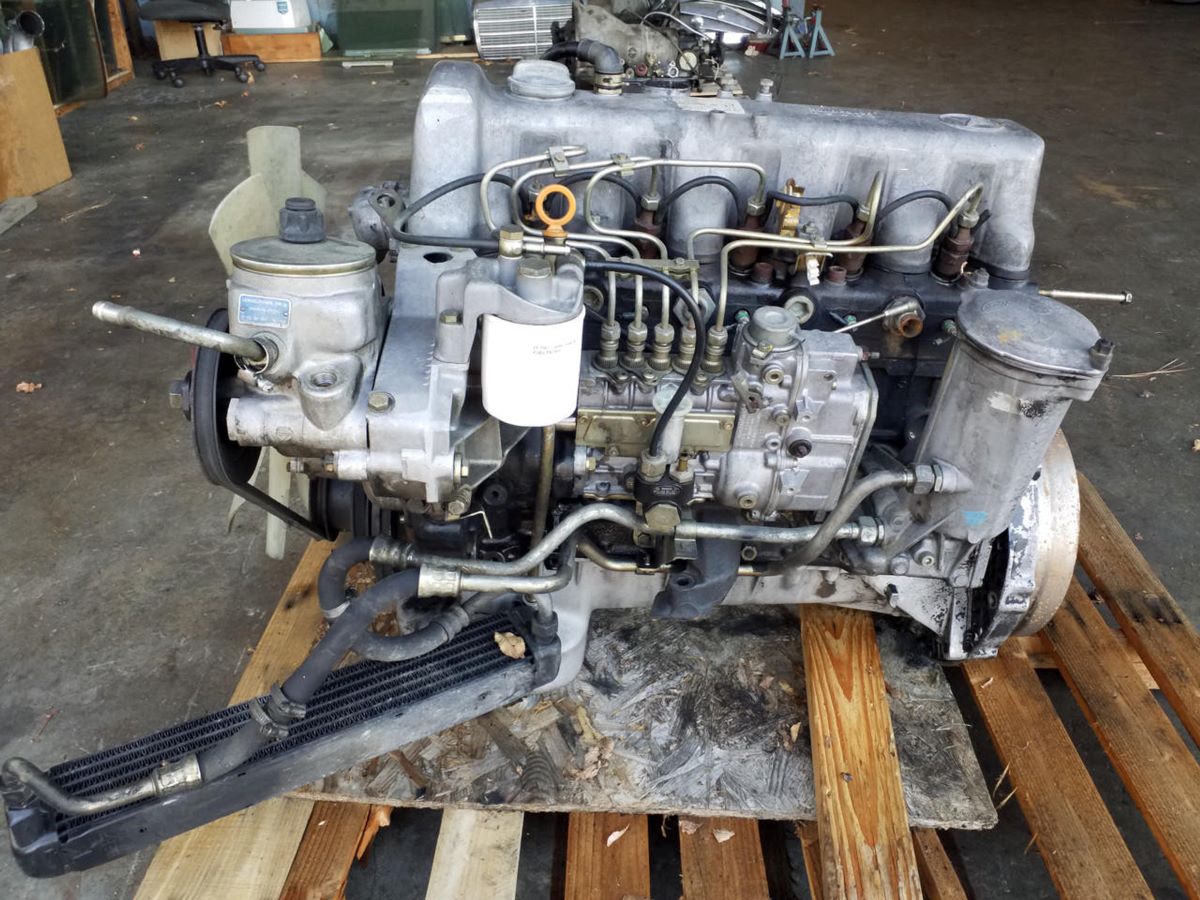
These engines have earned a legendary reputation for durability, routinely reaching 500,000 miles with standard maintenance and, in many cases, surpassing the million-mile mark with ease.
The 3.0-liter version was eventually fitted with a turbocharger and made history as the first turbo-diesel engine sold in the United States, debuting in the 1978 Mercedes 300SD of the W116 generation.
Despite delivering just 115 horsepower, it retained its bulletproof status. One of the most remarkable examples of its longevity is a 2.4-liter four-cylinder W123 taxi in Spain that astonishingly racked up more than 4.3 million miles—solidifying the OM616/617’s place in automotive history.
Also Read: 5 Trucks With the Best Factory Docking Stations and 5 Bare Consoles
2. Toyota 1HZ (4.2L I6 Diesel)
Stroke-to-Bore Ratio: 1.11
Years Active: 1990–Present (select markets)
This naturally aspirated diesel straight-six powers many Toyota Land Cruisers, especially in harsh environments like Africa and Australia.
Its long-stroke design produces stump-pulling torque, and it’s low-stressed, making it ideal for heavy loads and off-road duty. Engines regularly cross the 400,000-mile mark without major overhauls.
The Toyota 1HZ is a 4.2-liter (4,164 cc / 254.1 cu-in) inline-six, naturally aspirated, four-stroke diesel engine developed and manufactured by Toyota Motor Corporation. Designed for durability and long service life, this water-cooled engine is widely known for its reliability and is commonly found in Toyota’s heavy-duty vehicles.
The engine features a cast-iron cylinder block with a bore of 94.0 mm (3.7 inches) and a stroke of 100.0 mm (3.94 inches), resulting in a high compression ratio of 22.7:1.
In 1998, Toyota introduced updates to the 1HZ, including a reinforced cylinder block and crankshaft, redesigned pistons, and improved glow plugs. These revisions slightly reduced the compression ratio to 22.4:1. From 2002 onward, the 1HZ also received an Exhaust Gas Recirculation (EGR) system to help with emissions compliance.
Topping the block is a cast iron cylinder head utilizing a Single Overhead Camshaft (SOHC) layout, with two valves per cylinder. The engine employs an indirect fuel injection system and does not use any turbocharging or power adders.
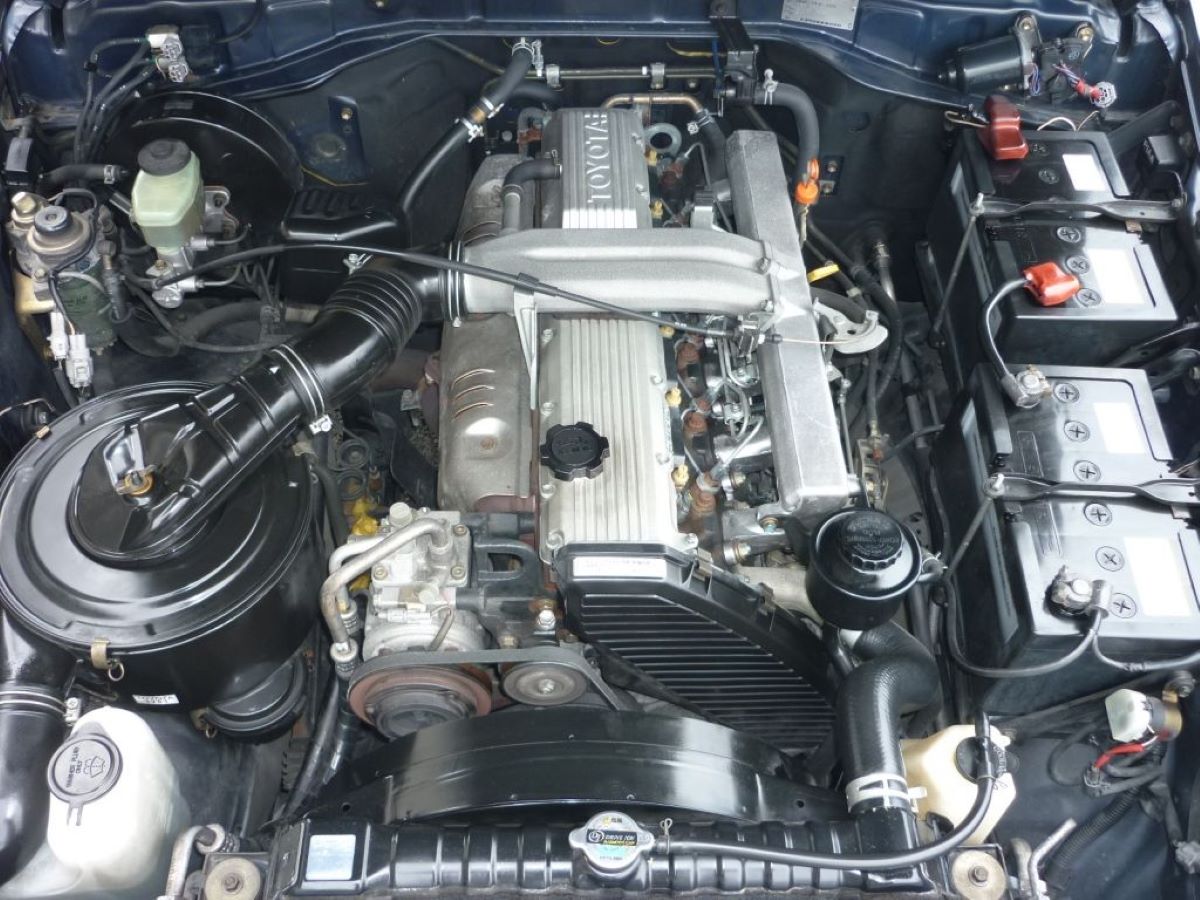
In terms of performance, the 1HZ engine delivers 131 PS (96 kW / 129 HP) at 3,800 rpm or 135 PS (99 kW / 133 HP) at 4,000 rpm, depending on the application. Torque output is equally strong, rated at 279 Nm (205.9 lb-ft) or 284 Nm (209.6 lb-ft) at 2,200 rpm. The firing order of the engine is 1-4-2-6-3-5, contributing to its balanced operation.
Breaking down the engine code, “1” designates the first generation, while “HZ” refers to the engine family. The 1HZ has a traditional mechanical injection pump and relies entirely on natural aspiration, which contributes to its simplicity and ease of maintenance.
Internally, the crankshaft is supported by seven main bearings within the crankcase, providing solid rotational stability. The crankshaft itself is made with 12 integrated balance weights and includes oil holes that supply lubrication to the connecting rods and bearings. The bearing caps are ladder-frame style, forming an integral part of the crankcase for added structural rigidity.
The pistons are crafted from a high-temperature-resistant aluminum alloy. The first compression ring is made of steel, the second from cast iron, and the oil control ring is also made of steel. All of these design choices were made with longevity and thermal efficiency in mind.
With its combination of rugged construction, mechanical simplicity, and dependable performance, the Toyota 1HZ remains a benchmark in diesel engine durability.
3. Ford 300 Inline-6 (4.9L Gasoline)
Stroke-to-Bore Ratio: 1.13
Years Active: 1965–1996
Ford’s 300 cubic-inch straight-six engine is a workhorse famous in F-series trucks and vans. With its long stroke and low-rev design, it’s torquey, simple, and ultra-reliable.
These engines are known to last decades even in tough farm and industrial use, often still running after 40+ years with minimal rebuilds.
The Ford 4.9 engine, also known as the Ford Inline 6 or the Ford 300, is a well-regarded powerplant that has earned a reputation for reliability and strength across decades of use in a wide range of Ford vehicles.
As an inline six-cylinder engine, the 4.9 features six cylinders arranged in a straight line, a configuration known for its natural balance and smooth operation. Its cast-iron block and cylinder head contribute significantly to the engine’s renowned durability and long lifespan, making it a favorite among mechanics and enthusiasts alike.
Maintaining this engine properly starts with using the right engine oil. For optimal performance and longevity, a high-quality multi-viscosity oil with a viscosity grade of 10W-30 or 10W-40 is recommended.
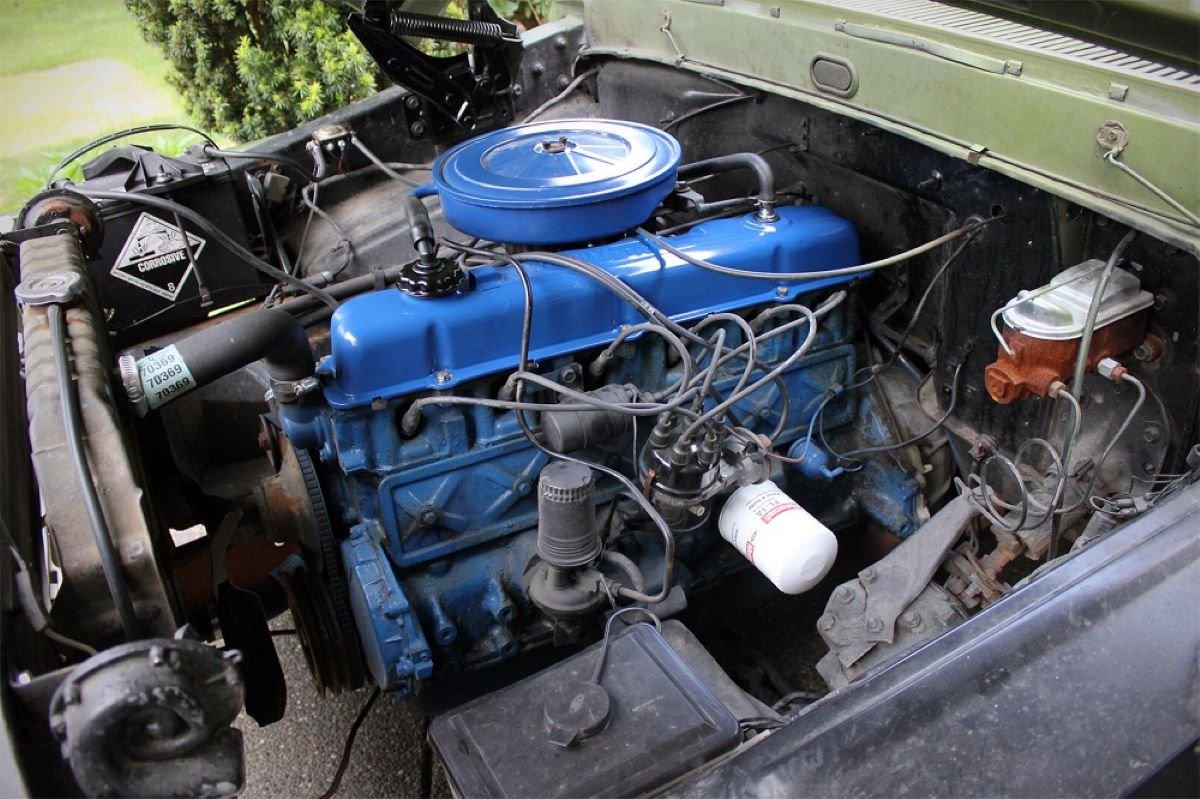
The engine typically holds around 5 quarts of oil, including the oil filter. It’s also essential to use a compatible, high-quality oil filter to ensure effective filtration and protection. Always consult your vehicle’s manual or a trusted mechanic for the correct filter specification.
Regular service intervals are critical to keeping the Ford 4.9 running smoothly. Engine oil and oil filters should be changed every 3,000 to 5,000 miles or every 3 to 6 months, whichever comes first, though you should always refer to your specific vehicle’s manual for manufacturer guidelines.
Spark plugs generally need replacement every 30,000 to 50,000 miles, and the air filter should be inspected frequently and swapped out every 15,000 to 30,000 miles, especially if it becomes dirty or clogged.
The fuel filter should be changed every 30,000 to 40,000 miles to maintain optimal fuel delivery and engine efficiency. If your 4.9 engine is equipped with a timing belt—a rare but possible variant—be sure to replace it at intervals specified by the manufacturer, usually between 60,000 and 100,000 miles.
With its simple yet robust design, the Ford 4.9 engine has become synonymous with reliability. Whether it’s powering a classic pickup or serving duty in a workhorse van, this engine proves that straightforward engineering and consistent maintenance can go a long way. For anyone looking to keep their Ford 300 running strong, following these oil specs and service intervals is essential.
Also Read: Top 10 Most Reliable Used Cars You Can Buy for Under $10,000 in 2025
4. Perkins 4.236 (3.9L I4 Diesel)
Stroke-to-Bore Ratio: 1.25
Years Active: 1964–Present (license production)
One of the most reliable tractor and industrial diesel engines ever built, the Perkins 4.236 runs practically forever.
Found in Massey Ferguson tractors and various construction equipment, it thrives on basic maintenance and operates under extreme load with ease. The long-stroke design helps deliver torque at low revs perfect for heavy-duty applications.
The first Perkins 4.236 engine rolled off the production line in August 1964. In its initial three years, more than 70,000 units were produced, with annual production in the UK alone reaching over 60,000 between 1969 and 1984. As global demand grew, international manufacturing through licensed partners pushed worldwide sales even higher in the engine’s later years.
The 4.236 played a pivotal role in solidifying Perkins’ position as a dominant force in the agricultural engine market, a lead it would maintain for the next three decades.
The 4.236, alongside its six-cylinder counterpart—the 6.354—represented a natural evolution from the legendary P-Series engines. These earlier models had already earned Perkins a global reputation for building diesel engines that were reliable, efficient, and forward-thinking.

Drawing on the lessons of the past and responding to evolving customer demands, particularly the call for more cost-effective solutions, Perkins incorporated advanced technological developments into the 4.236. This approach resonated strongly with customers and secured the engine’s place in the hearts of a generation.
While the 6.354, which debuted three years earlier, was originally aimed at the larger truck segment, the 4.236 proved perfectly suited for smaller trucks, generators, forklifts, and agricultural machinery such as tractors.
With an output of 80 horsepower at 2,800 rpm, it powered equipment for a wide range of manufacturers, including Massey Ferguson, Clark, Manitou, JCB, Landini, and Vermeer. The 4.236 built upon Perkins’ longstanding reputation for quality, reliability, and adaptability, ultimately reinforcing the company’s status as a leading diesel engine supplier in the agricultural industry.
5. Honda GX390 (389cc Single-Cylinder Gasoline)
Stroke-to-Bore Ratio: 1.11
Years Active: 2000–Present
This long-stroke industrial engine powers generators, pressure washers, and water pumps. Despite its small size, it’s a torque monster for its class.
Its simple OHV layout and extremely low operating RPM make it a favorite for continuous-duty applications. Many GX390s run 8–10 hours a day for years without issue.
The Honda GX390 K1 is a 0.39-liter (389 cc, 23.7 cu·in) single-cylinder, air-cooled, 4-stroke internal combustion gasoline engine with a horizontal shaft, developed by Honda Motor for a variety of general-purpose applications.
This engine is commonly used in equipment such as pressure washers, tillers, cultivators, generators, water pumps, and various types of construction or industrial machinery.
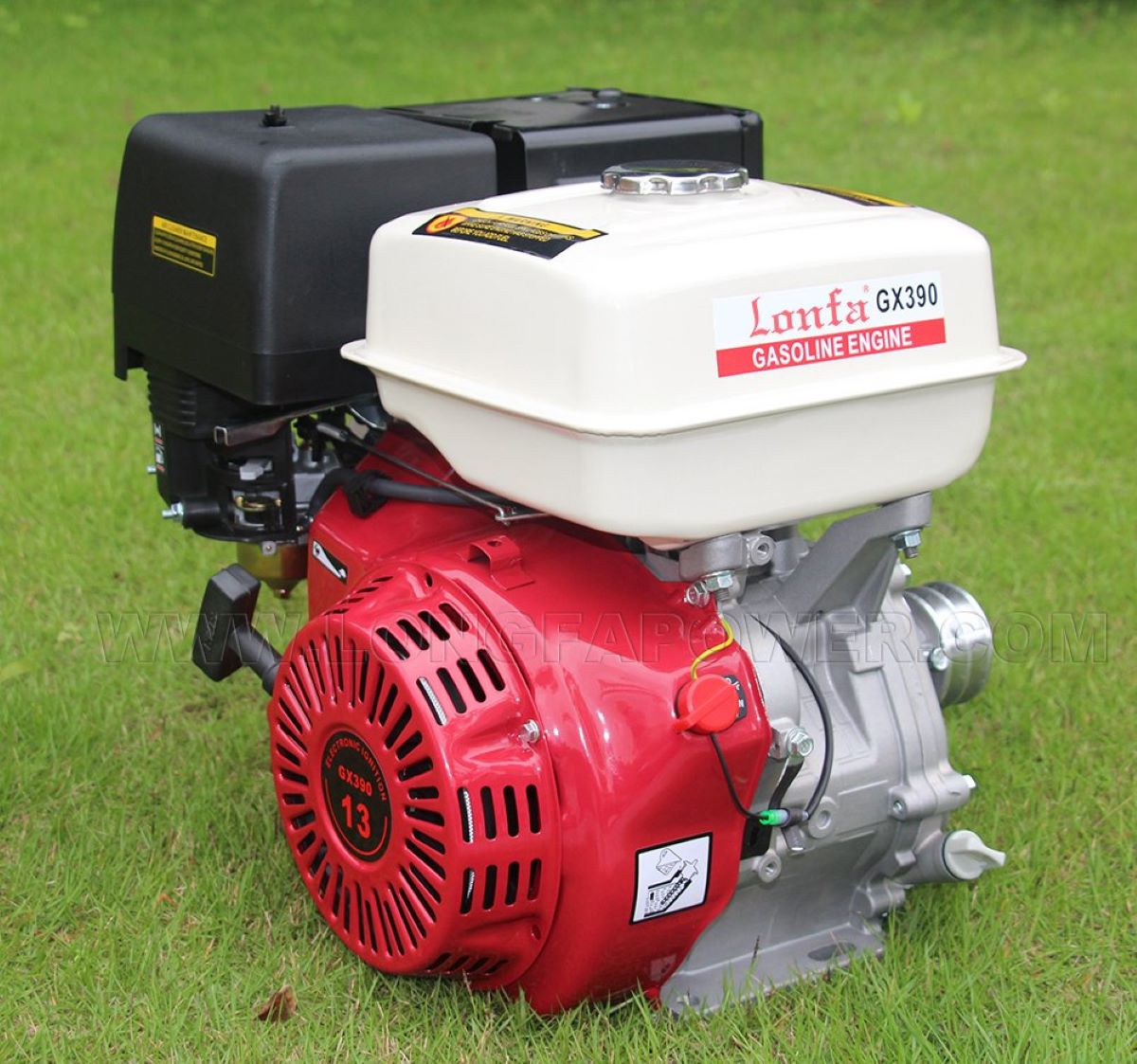
Beginning in spring 2010, Honda introduced an updated version of the GX390 engine to meet the strictest exhaust emission standards, specifically complying with EPA Phase III regulations.
The GX390 K1 features an overhead valve (OHV) configuration and a single cylinder inclined at a 25° angle. It utilizes a transistorized magneto ignition system and a horizontal carburetor fitted with a butterfly valve. The engine is available with either a recoil or electric starter for added convenience.
In terms of performance, the Honda GX390 K1 delivers 13.0 horsepower (10.0 kW) at 3,600 rpm and 27 Nm (2.7 kg·m, 20.0 ft·lb) of torque at 2,500 rpm. It has a bore and stroke measuring 88.0 mm by 64.0 mm, and a compression ratio of 8.0:1.
Long-Stroke Engines That Self-Destruct
In this article, we’re cutting through the hype and sentimentality to expose long-stroke engines that were notorious for blowing themselves apart—sometimes literally.
Whether it’s flawed engineering, poor material choices, or just pushing the limits too far, these powerplants have earned a place on the blacklist. Let’s get into the engines that self-destruct, despite their promising long-stroke design.
1. Nissan YD25 (2.5L I4 Diesel – Early Versions)
Stroke-to-Bore Ratio: 1.15
Years Active: 1998–Present
While later versions improved, early YD25 engines (especially in the Navara D40 and Pathfinder) had severe issues.
Weak timing chains, poor oil flow, and EGR clogging led to catastrophic failures. Their long-stroke layout placed extra stress on internals that weren’t reinforced accordingly, especially in turbocharged applications.
This engine brings decades of engineering experience together in a single, durable unit. Nissan hasn’t made many significant changes to this powerplant since its debut in 1998, and surprisingly, even after more than 25 years, it remains relevant. It continues to power vehicles like the Navara and Pathfinder in several markets.
Beyond those, it has also been used in models such as the Presage, Bassara, and Murano. Some of these were exclusive to the Japanese Domestic Market (JDM), while others were sold across Europe. Even today, a number of JDM vehicles are still equipped with this engine, and buyers continue to express strong satisfaction with its performance.
At its core, this is a 4-cylinder, 2.5-liter turbocharged diesel engine capable of producing between 110 and 190 horsepower, depending on the variant.
One of its standout strengths is its torque, which reaches up to 450 Nm in stock configurations. There are two primary versions of this engine: the NEO-Di with direct injection and the more modern Common Rail injection version, commonly known as the DCi.
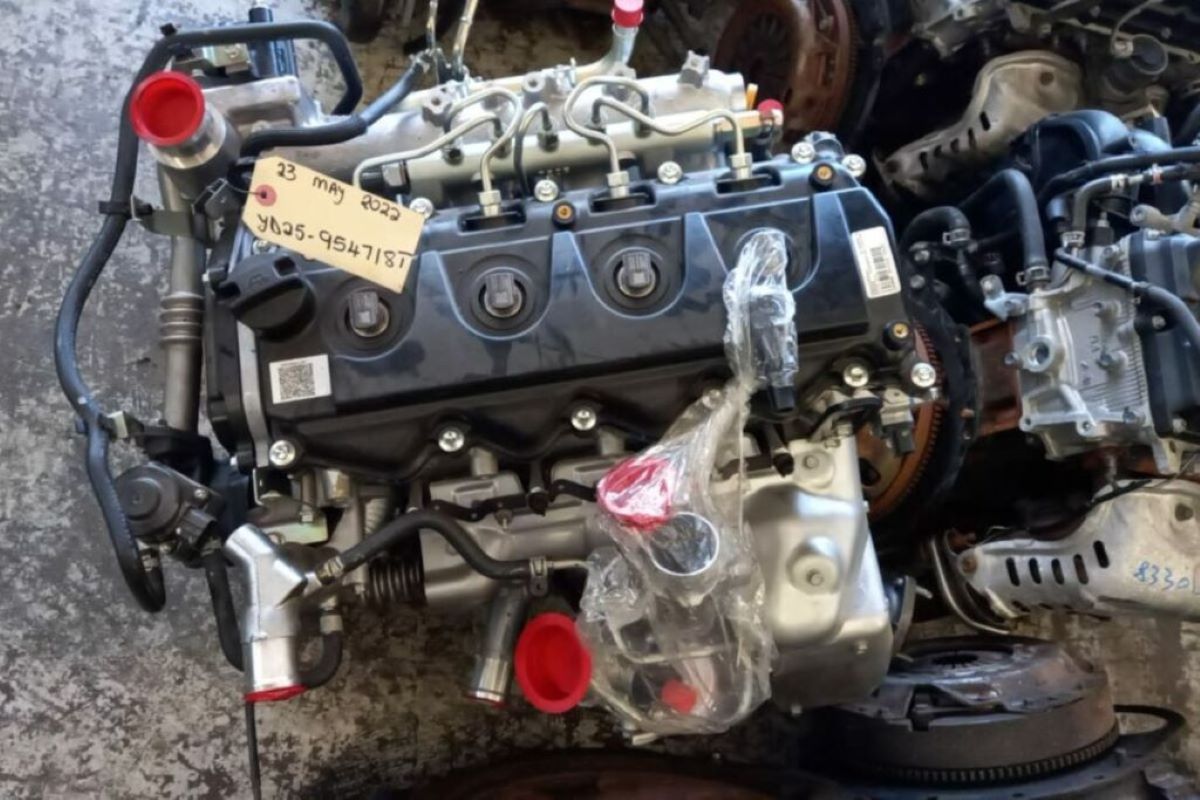
Both variants are equipped with an intercooler, but the Common Rail version also includes an EGR system to help meet stricter emissions standards. The engine block is cast iron, which was standard at the time the YD25 was developed, and it features an aluminum cylinder head.
A notable feature is the two-row timing chain that drives the camshafts. While it’s generally reliable, it’s not maintenance-free and can cause problems if neglected over time.
Despite its age, this engine is impressively fuel-efficient. For instance, in the Pathfinder, it can deliver around 11.5 liters per 100 kilometers in city driving and about 8 liters per 100 kilometers on the highway.
It’s particularly well-suited for towing and hauling moderate loads. While it’s not a performance powerhouse, it offers solid all-around dynamics.
In the Pathfinder, it accelerates from 0 to 100 km/h in just over 11 seconds—decent for a large SUV known more for its reliability and versatility than outright speed. What’s more surprising is how enjoyable this engine is to drive. That’s not something often said about diesels, but this one truly stands out.
Whether paired with a 5-speed automatic or a 6-speed manual transmission, the engine delivers impressive low-end torque and a flexible driving experience. In the third-generation Pathfinder, it remains the most economical and practical engine choice for everyday use.
2. Peugeot DW10 (2.0L I4 Diesel – Certain Variants)
Stroke-to-Bore Ratio: 1.14
Years Active: 1999–2015
Used across many Citroën, Peugeot, and Ford vehicles, the DW10 had multiple issues depending on variant.
Oil sludge, weak head gaskets, and DPF clogging caused premature failure. The long stroke didn’t help longevity when paired with tight tolerances and emission hardware that wasn’t robust enough.
The 2.0 HDi engine, developed through a collaboration between Citroën and Peugeot, marked a significant advancement in diesel engine technology.
First introduced in the early 2000s, it belongs to the DW engine family and quickly earned a reputation for combining strong performance with exceptional efficiency. With its emphasis on minimizing emissions and maximizing fuel economy, the 2.0 HDi has become a staple powerplant across numerous models in the PSA Group’s lineup.
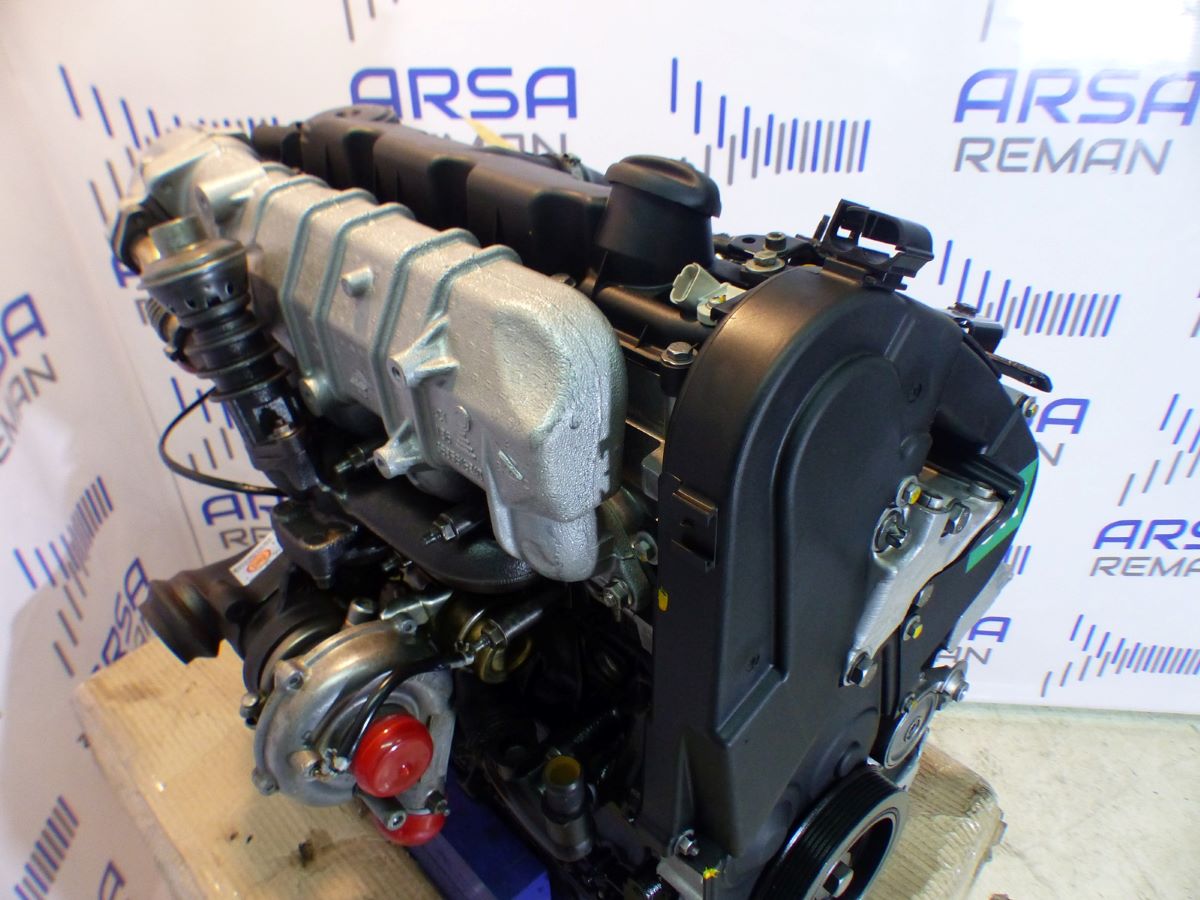
This engine incorporates a turbocharged setup, which allows it to deliver a strong power output while maintaining a broad and accessible torque band.
Among its various iterations, the DW10CTED4 variant stands out for its use of common rail direct fuel injection, a system designed to enhance fuel atomization and combustion efficiency. This not only improves overall performance but also contributes to lower engine noise, resulting in a smoother and more refined driving experience.
Renowned for its solid construction, the 2.0 HDi is built to withstand the demands of both everyday commuting and heavier-duty use.
Its durability and dependable performance under a variety of driving conditions have helped solidify its status as a go-to engine. As a result, it has found its way into a diverse range of vehicles, from family cars to commercial vans, offering a balance of reliability, efficiency, and practicality that appeals to a broad spectrum of drivers.
3. Hyundai/Kia 2.4 Theta II GDI (Gasoline)
Stroke-to-Bore Ratio: 1.10
Years Active: 2009–2020
On paper, the long-stroke Theta II GDI looked great for torque and fuel efficiency. In reality, it turned into a disaster.

Poor oil circulation, premature bearing wear, and piston slap led to class-action lawsuits and recalls. Despite the efficiency advantages of its stroke ratio, internal weaknesses doomed its lifespan.
The Hyundai 2.4L engine (G4KC, G4KE, G4KG, G4KJ) is part of the Theta and Theta II engine families. This 2.4-liter four-cylinder gasoline engine comes equipped with either multi-point or direct fuel injection, depending on the specific generation and vehicle application.
As is typical with Hyundai powertrains, this engine is also used across various Kia models. It closely resembles the 2.0L version of the same Theta series, with modifications reflecting the increased displacement and resulting internal stresses.
The engine features an aluminum open-deck cylinder block along with an aluminum cylinder head. To achieve the larger displacement, Hyundai fitted this engine with a new crankshaft that has a 97 mm stroke—compared to the 86 mm stroke found in the 2.0L version.
Additionally, the cylinder bore has been increased, and the engine uses newly designed pistons with an 88 mm diameter rather than the 86 mm pistons used in the smaller variant. The cylinder head includes four valves per cylinder (a total of 16) and utilizes dual overhead camshafts (DOHC). These camshafts are driven by a timing chain connected to the crankshaft.
The original Theta engines incorporated continuously variable valve timing (CVVT) only on the intake camshaft. However, the upgraded Theta II version introduced CVVT on both the intake and exhaust camshafts for improved efficiency and performance.
It’s also worth noting that the 2.4L engine does not feature hydraulic lifters or tappets. Instead, it employs shimless bucket lifters in the valvetrain, requiring valve clearance adjustment approximately every 60,000 miles.
4. GM 2.4L Ecotec (LE5/LEA)
Stroke-to-Bore Ratio: 1.06
Years Active: 2006–2017
GM’s naturally aspirated 2.4L four-cylinder in many Chevrolet and Pontiac models suffered from piston ring issues, high oil consumption, and timing chain failures.
The long stroke didn’t cause the issues but amplified them over time due to increased cylinder pressure and poor thermal management. Many of these engines failed before hitting 150,000 miles.
The LEA is an engine developed by General Motors for a broad range of compact and midsize vehicles. With a displacement of 2.4 liters and an inline-four layout, the LEA belongs to the Ecotec family of engines.
It comes equipped with direct fuel injection and variable valve timing and has the added capability of running on E85 ethanol-blended fuel. While it hasn’t been officially confirmed, it’s widely speculated that the 2.4-liter LEA will eventually be phased out in favor of GM’s more recent 2.5-liter LCV or LKW powerplants.
GM’s Ecotec 2.4L LEA is a flexible and technologically refined engine that serves as the base powerplant for a variety of vehicle applications. The integration of direct injection allows this engine to deliver solid horsepower and torque numbers while maintaining efficiency. It’s also FlexFuel-capable, giving it the versatility to operate on alternative fuels like E85.
Thanks to the Ecotec 2.4L’s direct injection system, the engine produces more power using less fuel and generates lower emissions. Notably, it reduces cold-start emissions by up to 25 percent. The engine builds torque steadily and smoothly up to its peak at 4,900 rpm, offering reliable and consistent performance across a wide range of driving scenarios.
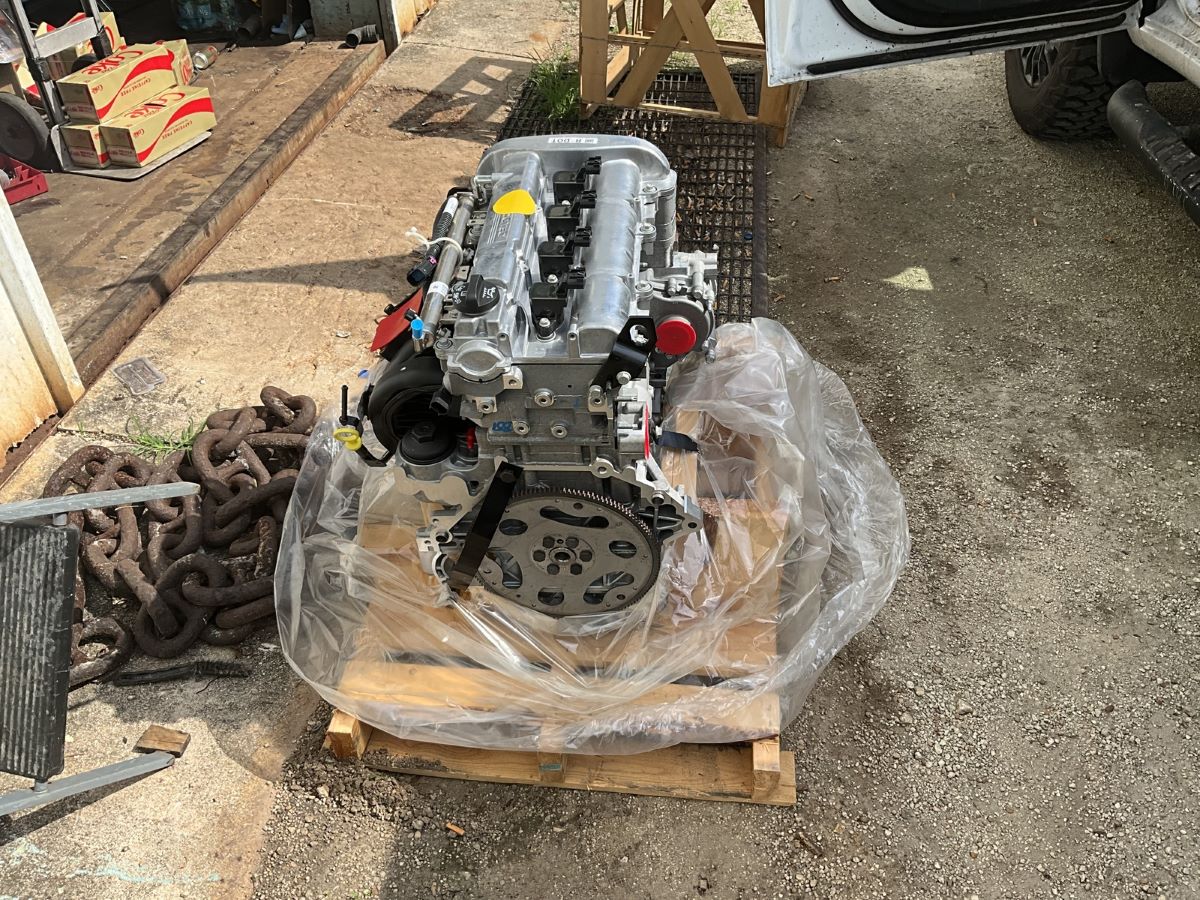
The sand-cast cylinder block in the Ecotec 2.4L offers robust structural integrity and helps minimize noise, vibration, and harshness (NVH). The main bearing bulkheads, which support the crankshaft, along with the cylinder bore walls, have been significantly reinforced to manage the engine’s increased load demands.
The Ecotec 2.4L uses lightweight aluminum pistons that reduce reciprocating mass, enhancing efficiency, decreasing vibration, and improving the overall performance feel as RPM increases.
Each piston is equipped with a dedicated oil jet that sprays oil onto the underside of the piston and the cylinder wall. This targeted lubrication helps cool the pistons, reduce friction and operating noise, and increase engine longevity.
The cylinder head is cast from SPM 319 aluminum using advanced semi-permanent mold (SPM) technology. This construction offers superior strength, minimal machining requirements, and optimal port flow. It is specifically designed to accommodate direct fuel injection into each combustion chamber.
Additionally, it includes high-grade components such as premium valve seats, guides, and valves. The head is also engineered with integrated oil passages that supply internal oil control valves used to actuate the cam phasers, which enable the engine’s variable valve timing system.
5. Volkswagen 2.0 TDI (EA189 – Dieselgate Engine)
Stroke-to-Bore Ratio: 1.16
Years Active: 2007–2015
Though efficient and torquey, the EA189 2.0 TDI engine became infamous for Dieselgate and for real reliability problems. EGR cooler failures, cracked DPFs, and turbocharger issues were common.
The long-stroke design combined with tight emission controls created high combustion chamber stress that led to premature wear, especially in city-driven cars.
Long-stroke engines excel in durability when built correctly. Their natural efficiency and torque-friendly characteristics make them favorites in heavy-duty applications and low-revving vehicles.
The 2.0 TDI engine, specifically the EA189 variant, has served as a foundational part of Volkswagen’s diesel lineup, widely recognized for striking a strong balance between performance, fuel economy, and compact design.
Introduced in the early 2000s, this engine quickly developed a reputation for solid engineering and versatile application, becoming a go-to option for a wide range of models within the Volkswagen Group.
Featuring a common rail direct injection system and turbocharging, the EA189 was developed to offer a refined and efficient driving experience while meeting strict emissions standards.
This four-cylinder turbocharged diesel engine is known for its relatively lightweight construction and efficient combustion process. The 2.0 TDI delivers a strong combination of power and torque, making it suitable for various driving environments—from daily urban commuting to longer highway trips.
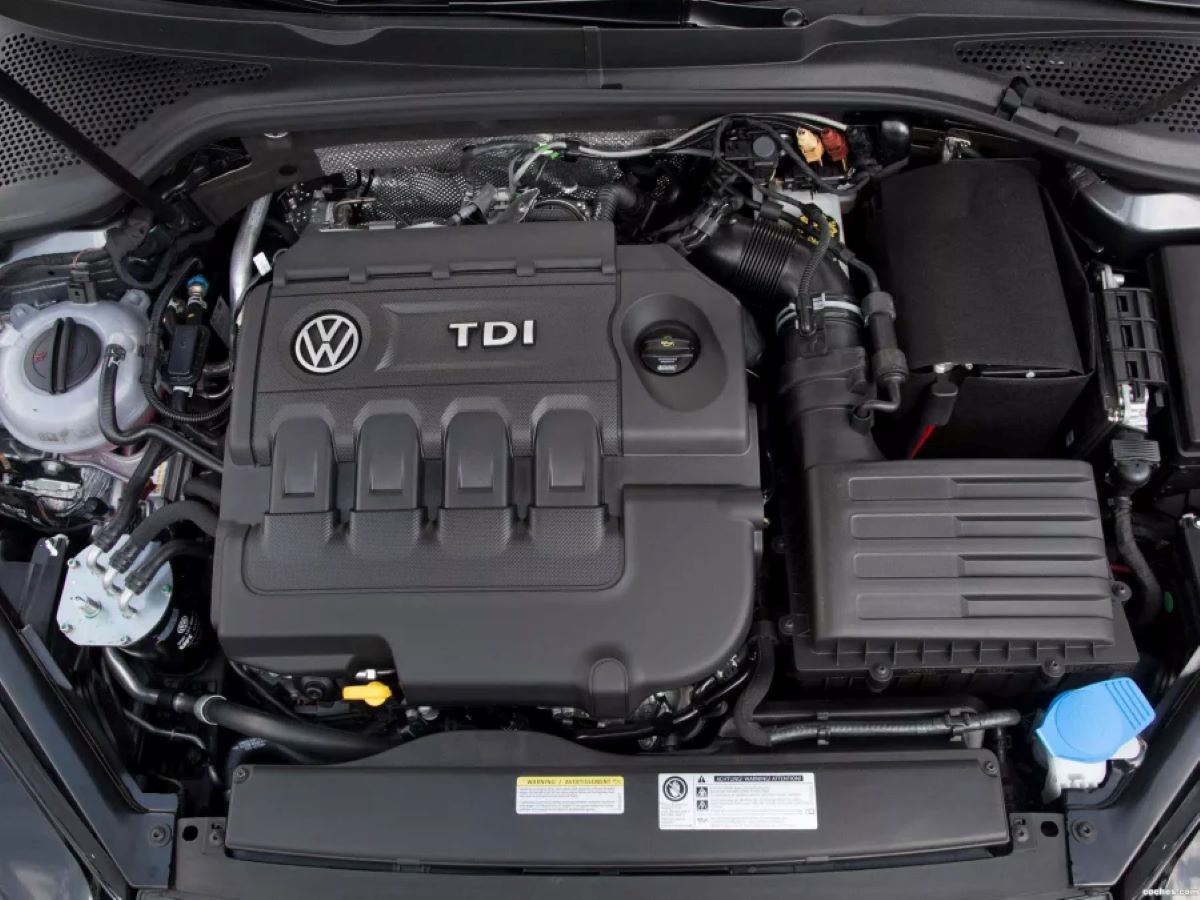
One of its key advantages is its ability to generate significant torque at low RPM, which is especially beneficial in larger vehicles where pulling power is important.
Due to its adaptability, the EA189 engine has been employed across numerous Volkswagen Group vehicles. The Volkswagen Golf, for example, has featured the 2.0 TDI in multiple generations, appealing to drivers looking for a combination of performance and efficiency.
The Passat benefits from this engine’s smooth power delivery, making it a preferred choice among business professionals and families. The compact Volkswagen Jetta also uses the 2.0 TDI, offering a practical blend of style and drivability.
In the Tiguan, a compact SUV, the engine’s torque helps enhance off-road capability and general performance. Škoda’s Octavia, known for practicality and value, has featured the engine as well, catering to budget-conscious buyers who still want decent power.
The sportier SEAT Leon uses the EA189 to offer engaging dynamics alongside diesel fuel savings, and Audi’s A3 compact luxury car incorporates it to maintain the brand’s standards of power, efficiency, and refinement.
Although the EA189 engine has played a vital role in Volkswagen’s diesel success—especially in European markets where diesel vehicles are favored for their efficiency and low CO₂ emissions—it has also been at the center of controversy due to its role in the diesel emissions scandal.
This has somewhat impacted its reputation. However, despite that setback, the 2.0 TDI remains an important example of Volkswagen’s efforts to combine innovation with efficiency in diesel engine development.
From a technical standpoint, the EA189 variant of the 2.0 TDI engine offers compelling performance metrics that suit a wide range of driving needs. It produces 140 horsepower (103 kW) at 4,000 RPM and generates 320 Nm of torque at just 1,750 RPM, delivering strong low-end power.
It uses a common rail direct injection system and a variable geometry turbocharger, allowing precise fuel delivery and responsive boost across different loads. The engine’s compression ratio is 16.2:1, and its maximum engine speed reaches up to 4,500 RPM.
In terms of physical specifications, the engine’s compact dimensions—500 mm in length, 600 mm in width, and 700 mm in height—help it fit across a broad range of vehicle platforms.
Weighing in at 160 kg, it provides a solid structure without excessive bulk. Maintaining proper lubrication is essential for this engine’s performance and longevity. With an oil capacity of 5.5 liters (including the filter), the EA189 requires 5W-30 fully synthetic motor oil, and oil changes are recommended every 10,000 kilometers or 12 months, whichever comes first.
While the EA189 engine has received praise for its drivability, efficiency, and widespread use, its reliability record is mixed. Many drivers report dependable service and performance over time, but several known issues have surfaced.
Understanding these common problems is essential for current owners and prospective buyers alike to ensure the engine remains in good condition and delivers the kind of experience it was built for.
But as seen in several modern examples, emissions constraints and weak component design can turn a promising long-stroke setup into a self-destructing liability.
Always look beyond the specs and into the execution when judging longevity.

